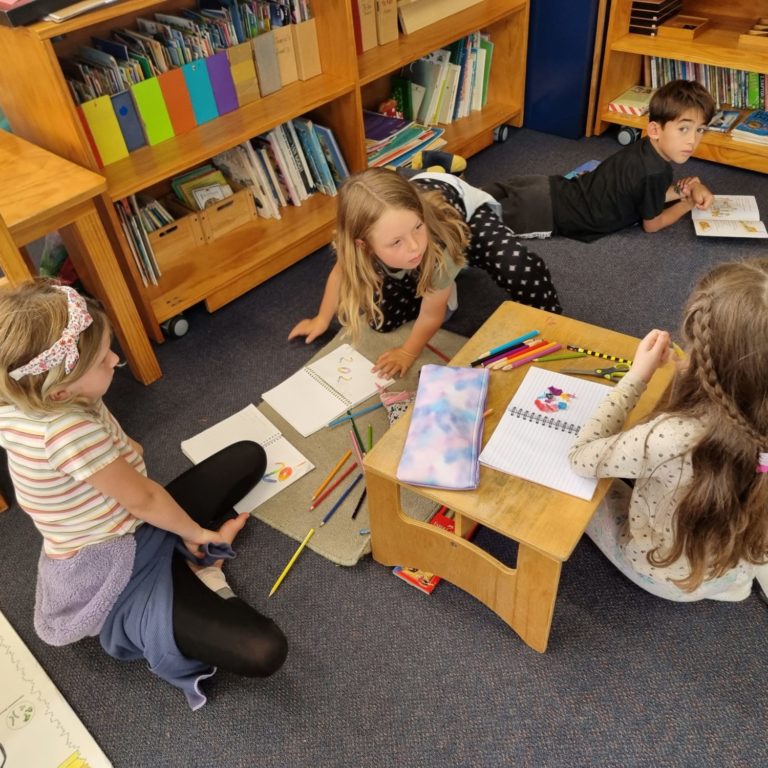
During my first 4 weeks at Wā Ora I have noticed “space and time”. The prepared environment is crucial and having 3-hour or longer work cycles means the kaiako can work with ākonga without interruption. I asked some of our Tōtara ākonga what they thought – Nadine Smyth, Tōtara Teacher
What a Montessori school means to me:
Being able to choose your work freely and learning the responsibility to balance your own work and not having someone telling you what to do all of the time. Being able to work with your friends and have a good time. I feel like Montessori can help you to be more creative and not be boxed in. Not having assignments all the time.
My mum likes it, more freedom to move, we have to pay money, no uniforms!!
The teachers make weird rules like “only two exclamation marks!! (in writing) and “no hat no play”.
We can choose where to sit, and choose what we want to do some of the time. We have cool materials.
When I was at my last school, I had a very strict teacher. She would literally tell me exactly what to do, you get told off a lot, especially for talking in the class and you do lots of work on your Chromebook. We get to do lots of different things in Tōtara, I learn a lot of math and we can do sewing.
We get to do specialist classes. I like art and P.E.
What tasks have you freely chosen today?
I have written a story about a girl and an evil person who lives in a mirror. I have been practising addition on paper, I have read some of the “Augy and Me” book and done research on Guinea Pigs. I have planned my journal and completed spelling. I have assisted new members of the class with sewing, and setting up the machine. Next, I plan to play “The Game of Awesome” (a writing game) with my friends. I love games that include fun and learning with your friends.
We have worked on Grammar, writing, gone to technology, used the peg board, sewing, times tables, drawing, crochet. Made fruit leather, harvested fruit, prepared it and put it in the dehydrator to make fruit leather.
Today, I worked on my project about the universe. I did research using books from the Library. We worked together on Lowest Common Multiple, using the material to follow up on the lesson that Anna gave us. I did some colouring in, then I completed handwriting from a dictation.
Do you get your mahi (work) done and learn?
I enjoy the freedom I get here. There is no one way to do work, there are multiple ways to get your work done. I still work hard. The teachers make work fun.
We get to do specialist classes. I like art and P.E.
Can you just muck around all day?
No, the teachers remind us politely and then if we don’t listen, they sometimes take us to the teachers’ table and give us a lesson or work alongside us. We then follow up on the lessons with equipment. It is actually pleasantly nice.
Tē tōia, tē haumatia
Nothing can be achieved without a plan, a workforce and a way of doing things.
